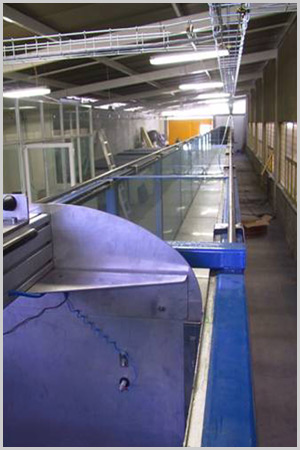
![]()
Coasts and Ports
___________________________________________________________________
This laboratory is part of the
Hydraulics Department.
It began operations in 2004.
The laboratory is run by
Dr. Rodolfo Silva Casarin and
Dr. Edgar Gerardo Mendoza Baldwin.
It is located in building 8,
II UNAM. Ciudad Universitaria.
SCOPE
The work performed in the laboratory is related to the stability of beaches and the design and evaluation of the hydrodynamics of offshore structures.
MAJOR WORKS AND RECENT PROYECTS
Currently, the laboratory is working on scale modeling of the behavior of artificial fillings and giving recommendations for the rehabilitation of the beaches of Cancun.
Studies to improve the efficiency of artificial reefs.
Breakwater design optimization of spare parts, development of a resonance device of the "bufadora" type for wave energy exploitation and analysis of the dragging phenomenon on beaches.
EQUIPMENT
This laboratory is equipped with a 37-m long by 80-cm wide and 120-cm high channel. The material of construction of one of the sides and bottom of the channel is stainless steel and the other side is made up of 30 meters of tempered glass and stainless steel at the ends. The channel is supported by a tubular structure (PTR steel) to a height of 80 cm above the ground level.
Generating equipment was purchased from the HR Wallingford Company in the UK, and it can generate waves (regular monochrome), random (irregular casual), arbitrary (user defined). The piston-type generator consists of a steel plate held by a horizontal rail that moves forward and backward. This track, in turn, is suspended from a fixed structure positioned at the sides of the channel walls, which allows the isolation of vibrations.
A reflection absorption system in the blade, acoustic Doppler speedometers, speedometer for particle tracking (PIV-laser), micro propellers for speed measurement, pressure sensors, video recording systems and pumping system to generate waves and water level variations of the flow.